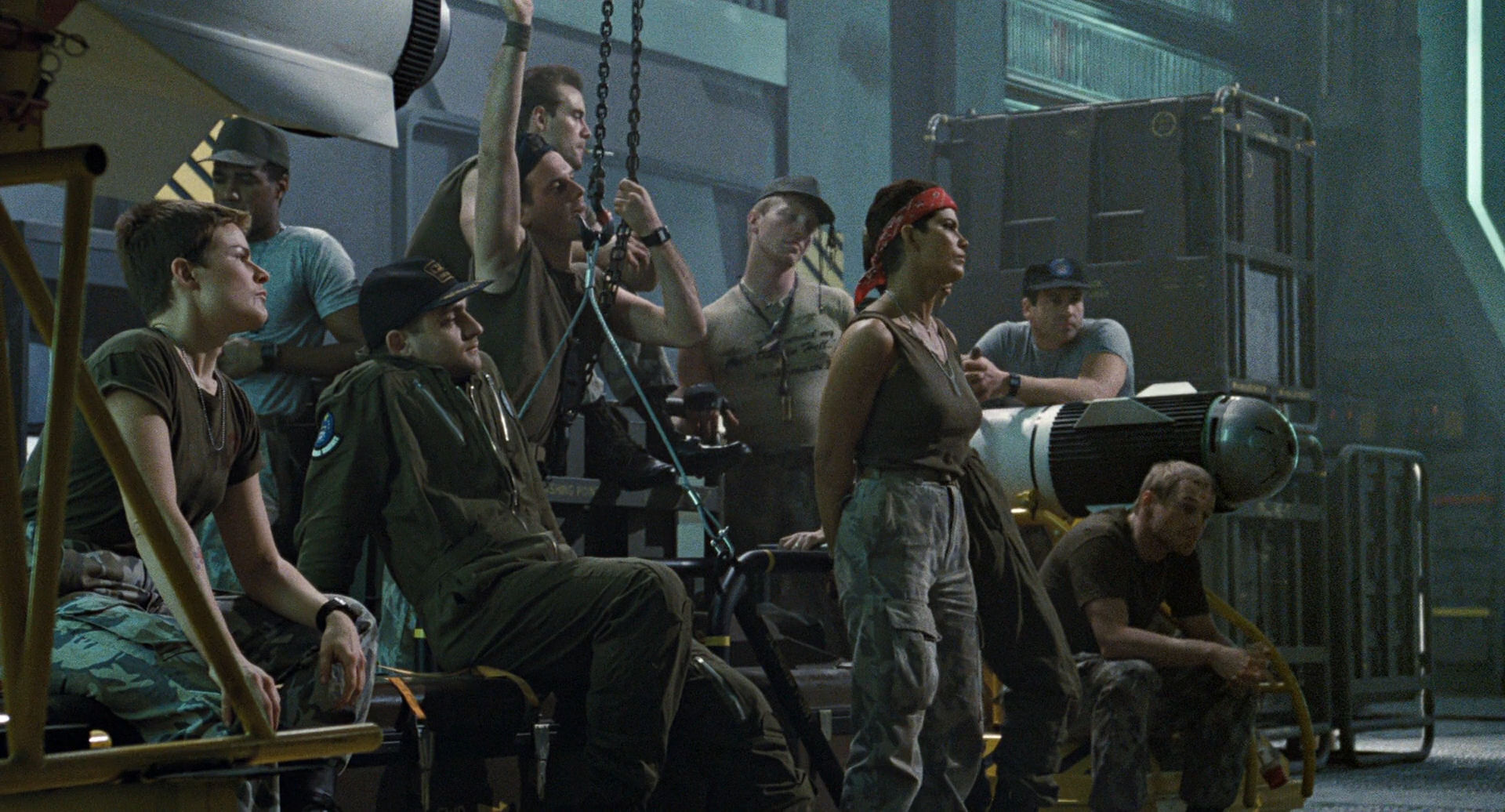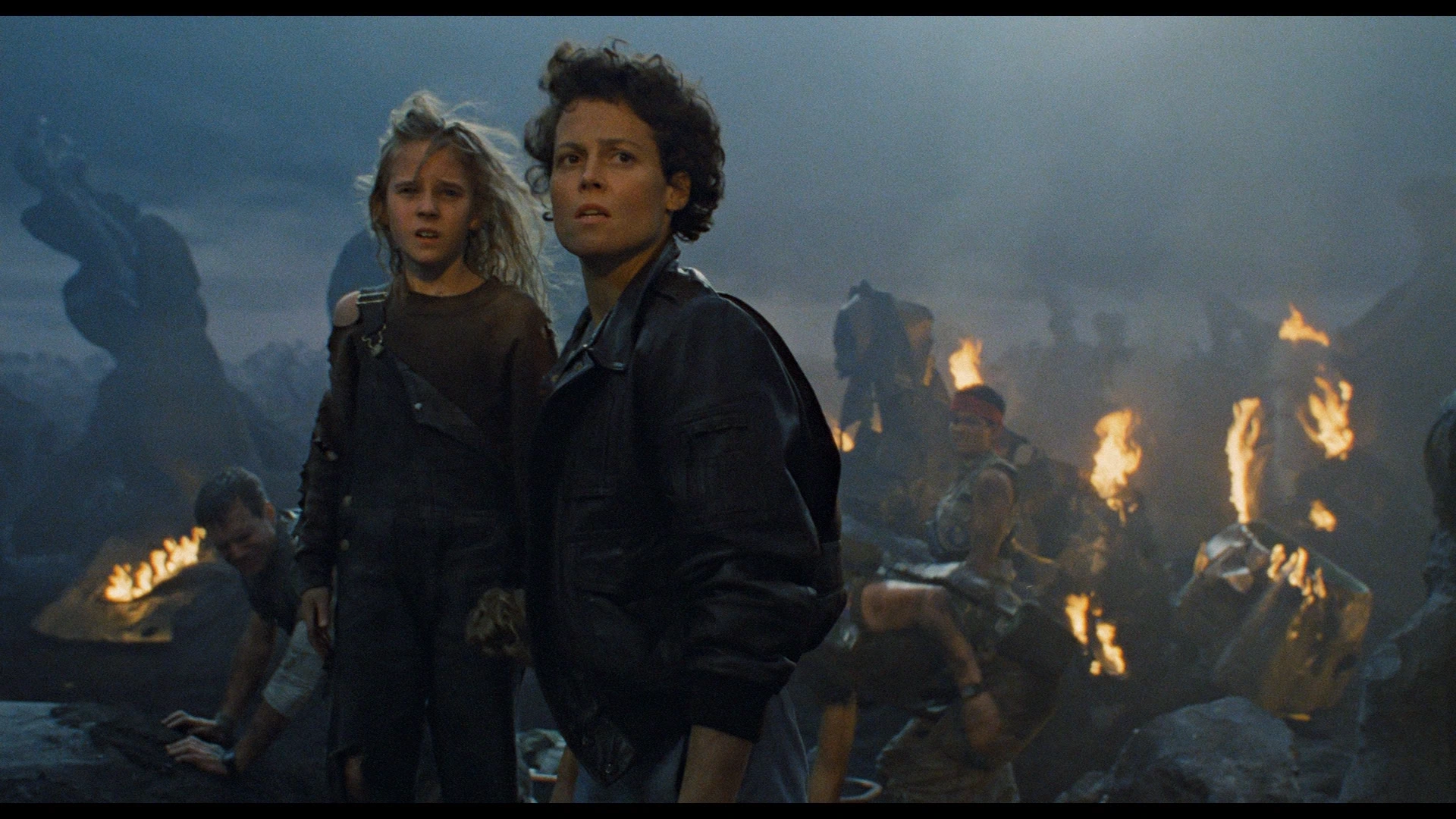A seven-time Oscar nominee and two-time winner, James Cameron’s 1986 Aliens was everything people wanted and more following 1979’s Alien. Launching the standard for all sequels far above what was typically expected, the action-and-alien-focused sequel came at a perfect time: a time where space exploration was of massive interest to the public, with the devastating Challenger Space Shuttle explosion watched around the world, and chaos on Earth itself was occurring with the Chernobyl Nuclear Power Station explosion, the public was more willing to look up to the world of Aliens than ever. Aliens changed the standard of action sci-fi movies by revamping old-school use of miniature models to portray “monsters” paired with an unforgiving momentum that just doesn’t stop until the film is over. Where this sequel strays from the first film’s atmosphere of the unknown and pure tension, it makes up for monumentally in being larger-than-life, action-oriented and everything you didn’t know you could have from a sequel film.

Ripley (played by Sigourney Weaver) & Newt (played by Carrie Henn)
Leading straight off of what viewers remember from the first movie, main character Ripley – played by Sigourney Weaver – and her cat, Jones – played by, well, cat – are awakened from their 57-year cryogenic slumber by a salvage vessel that stumbled upon them by sheer luck. Being blamed by the Weyland-Yutani Company for the destruction of the multimillion-dollar spaceship that was overrun by aliens in the first film, Ripley is then treated with little respect, deemed crazy, and stripped of her ranking while being harassed with horrific nightmares and night sweats since awakening. Ripley is soon after bribed by Carter Burke (played by Paul Reiser) with the renewal of her ranking, if she accompanies a new crew back to the planetoid – now named LV-426 – where she had first encountered the aliens. To her dismay, the Company reveals they had sent people there to colonize LV-426 and had just recently lost all contact with them, wanting her to advise the mission as the only person to have made it there and back to civilization.
After the backstory builds and the Colonial Marines and android (played by Lance Henriksen) that Ripley has accompanied have been introduced – this takes a while, unfortunately – the dripping, venomous action kicks off. Ripley quickly learns that this lot of Marines do not take the mission seriously, nor do they care for her knowledge and experience with the aliens. However, Corporal Hicks (played by Michael Biehn) is intrigued by Ripley, later becoming an ally.

Shot of the Marines crew before getting to LV-426
All of the extraterrestrial, fear-inducing sci-fi action that the Alien franchise is known for is wholly embodied by Aliens as the first mission the Marines go on quickly turns into a brutal battlefield filled with flamethrowers and facehuggers where the aliens come out on top. Having to take matters into her own hands and proving to be the most capable once again, Ripley saves the last of the Marines – Vasquez (played by Jenette Goldstein), Hudson (played by Bill Paxton) and Hicks – only to be left stuck on the planetoid once again as the ship sent to save them is destroyed by aliens.
Sigourney Weaver’s performance too must be individually noted while talking about Aliens, both because her character Ripley kicked action-hero stereotypes to the curb and because of Weaver’s talent as an actress. Landing herself a Best Actress Oscar nomination for the film, Weaver didn’t fit into the “damsel in distress role”, which audiences and critics responded to in waves of approval. Ripley’s lack of reliance on masculinity and physical strength, utilizing her level-head and quick-thinking instead made her something of an icon for feminism in Hollywood and society. This challenges Tasker’s telling of an action hero (male, with a large focus on the body) as well as typical action film plots like damsel-in-distress and an underlying love interest (for Aliens did not have one).
Over and over, the film accentuates the cunning nature of the creatures and the personal level on which Ripley is connected to them. Adding in the child character Newt (played by Carrie Henn), Sigourney Weaver’s character develops once again, making her not only the hero of the film who happens to be a woman, but playing off of her femininity by displaying by her devotion to Newt. Weaver’s role as Ripley is vital to the film’s success as a lot of what the film achieves is at least partially due to Ripley’s intelligence and survivalist acts of heroism that keeps audience’s rooting for her.

Newt (Henn) & Ripley (Weaver) plus Marines crew after the rescue-plane crashes
The driving force behind Aliens’ commercial success and Weaver’s iconic character is director James Cameron. Only his second feature film (third if you count The Piranha II: The Spawning, which he was fired as director from after two weeks), Cameron’s distinctive skill for detail and creativity in special effects is obviously displayed throughout the film. While bigger and better isn’t always “bigger and better”, that didn’t stop Cameron from upping the ante in Aliens with the 14-foot tall alien queen that had to be operated by an 18-person crew while the other aliens were strung up in wires and controlled or played by 8-foot mannequins and acrobats. This technique of puppetry was unseen before at such a large scale, and it’s Cameron’s direction that pulled it off in the film: How else would these creatures have managed to look so realistic and skin-crawling in all of their slimy, creepy glory?

Xenomorph (alien) Queen
That technique goes hand-in-hand with the usage of weaponry throughout Aliens which contains about one hundred times more firepower than in the first film. A large reliance on “new and improved” weaponry 57 years later in their world becomes an increasingly larger mistake on part of the Marines when face to face with the aliens. As they find they cannot use any of the bullets they need for their guns inside parts of the complex where the colony was, flamethrowers come into play as does an armored vehicle that renders itself broken shortly after the action in the film begins.
Mentioned above, Cameron was a relatively inexperienced director coming into Aliens. Yet just coming off of all the popularity and worldwide success of The Terminator (1984), he had some flair going on and continued to prove himself. He has gone on to direct films that rocked both the box office and the public, cementing his name as a director. His most well-known works consist of the first two Terminator films, Titanic and Avatar, with several other works such as True Lies and The Abyss(plus being the reported director of all future Avatar films, which have potential to turn into a quadrilogy). With Academy Awards in Best Picture, Best Director and Best Film Editing with numerous nominees, plus Golden Globes and Primetime Emmy Awards among other accomplishments, it would be nothing short of insulting to not recognize James Cameron as a household name in Hollywood and to the public.

James Cameron on set
Of course, the Alien franchise itself has grossed billions of dollars worldwide, but it was truly this second film that opened up the pathways for the continuation of the franchise. Aliens raised the bar for what a sequel could truly be: not just a continuation from its predecessor, but an upgrade on every level that leaves audiences trembling in new and invigorating ways. Capturing an insane amount of intensity and momentum, the film makes it hard not to think about long after it’s over, and for that, it deserves all of the recognition it’s gotten, including a 99% rating from Rotten Tomatoes and an 8.4/10 star rating from IMDb. The film was one of the highest grossing Rated-R films of its time and made $180 million worldwide off of an $18 million budget, easily one of (if not the)best films of the franchise. If you’re going to remember any of the Alien films, this better be one of them.
All fantastic special effects and acting aside then pulling the spotlight from James Cameron’s direction back for a moment, we cannot forget one of the best (or, at least, most memorable) lines ever delivered, via Ripley to the alien queen: “Get away from her, you b*tch!”
(skip to :47 to hear the actual line, otherwise enjoy the full scene leading up to it)
Aliens works in just about every single way as a powerhouse sequel with an equally stunning female lead role rare for its time, the film continued to demonstrate both the gullible nature and perseverance of mankind. As director James Cameron utilized new, monstrous special effects, the world of Aliens became that much more intense and enticing for audiences, making it a must-see film – and led to what is now the iconic Alien franchise.


Recent Comments